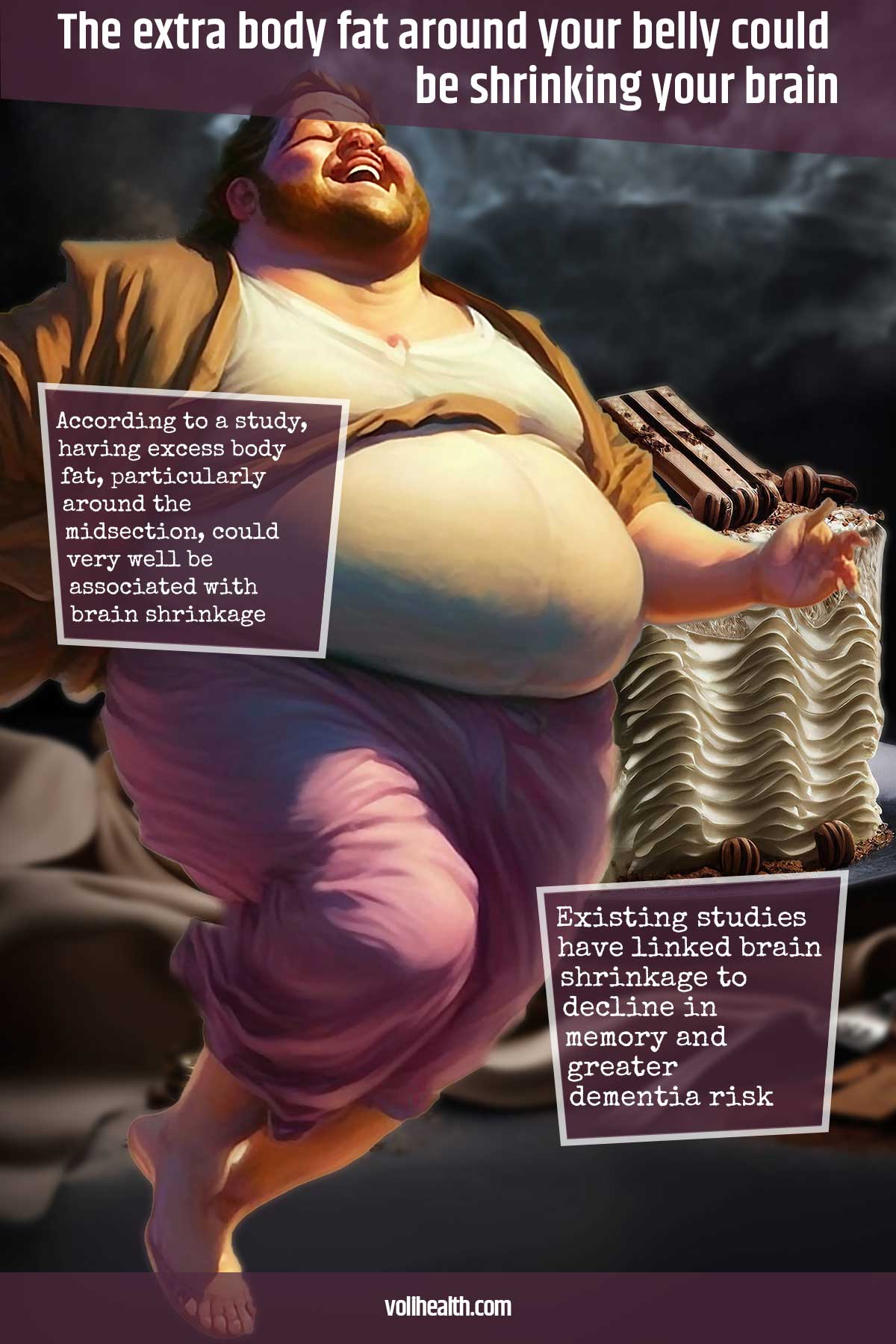According to a study, having excess body fat, particularly around the midsection, could very well be associated with brain shrinkage. The researchers established obesity status by measuring waist-to-hip ratio and body mass index (BMI) in individuals participating in the study and found individuals having higher ratios of both these measures had the smallest brain volume.1✅ JOURNAL REFERENCE
DOI: 10.1212/WNL.0000000000006879
BMI is a weight-to-height ratio. It’s established by dividing an individual’s weight by the square of their height. Individuals having a BMI of more than 30.0 are regarded as obese.
The waist-to-hip ratio is established by dividing the waist circumference by the hip circumference. Individuals who have larger bellies in comparison to their hips have higher ratios. Women with a ratio above 0.85 and men with a ratio above 0.90 are regarded as centrally obese.
Existing studies have linked brain shrinkage to decline in memory and greater dementia risk, but studies on whether excessive body fat is detrimental or protective to brain size have not been conclusive.
The current study examined 9,652 individuals with an average age of 55 of which 19% were established to be obese. Waist-to-hip ratio, BMI, and overall body fat were measured and individuals were surveyed with regards to their health. Magnetic resonance imaging was then made use of for determining brain volumes for gray and white brain matter and volumes in the different brain areas.
Gray matter contains most of the nerve cells of the brain and includes brain areas associated with sensory perception, muscle control, and self-control. White matter consists of bundles of nerve fibers connecting various areas of the brain.
After other factors that could impact brain volume were adjusted for, such as physical activity, age, high blood pressure, and smoking, it was discovered that although a high BMI alone was associated with slightly lower brain volumes, individuals who had high BMI and waist-to-hip ratios had lower volumes of gray matter compared to individuals who didn’t have a high waist-to-hip ratio.
It was discovered that 1,291 individuals having a high BMI and a high waist-to-hip ratio had the lowest volume of gray matter of 786 cubic centimeters on average, in comparison to 3,025 healthy weight individuals who had a volume of gray matter of 798 cubic centimeters on average and 514 individuals who had a high BMI but without high waist-to-hip ratio who had a volume of gray matter of 793 cubic centimeters on average. No significant differences were found in white matter volume.
Although the study found that obesity, particularly around the mid-section, was linked to lower volumes of gray matter in the brain, it’s not clear if brain structure abnormalities result in obesity or if obesity causes these brain changes. Links between obesity and shrinkage in certain areas of the brain were also found.
A study limitation was that only 5% of individuals who were invited to the study participated, and individuals who took part tended to be healthier compared to individuals who didn’t, so the results might not reflect the population in general.
Want to use our images on your site? Right click on image for embed code



